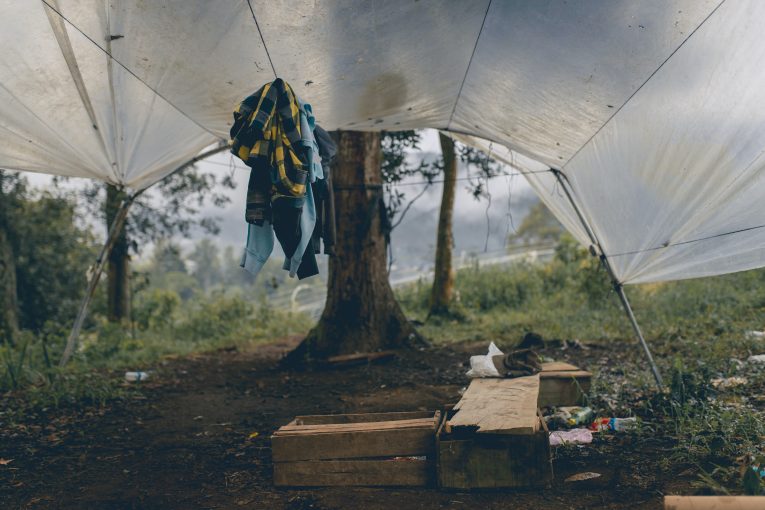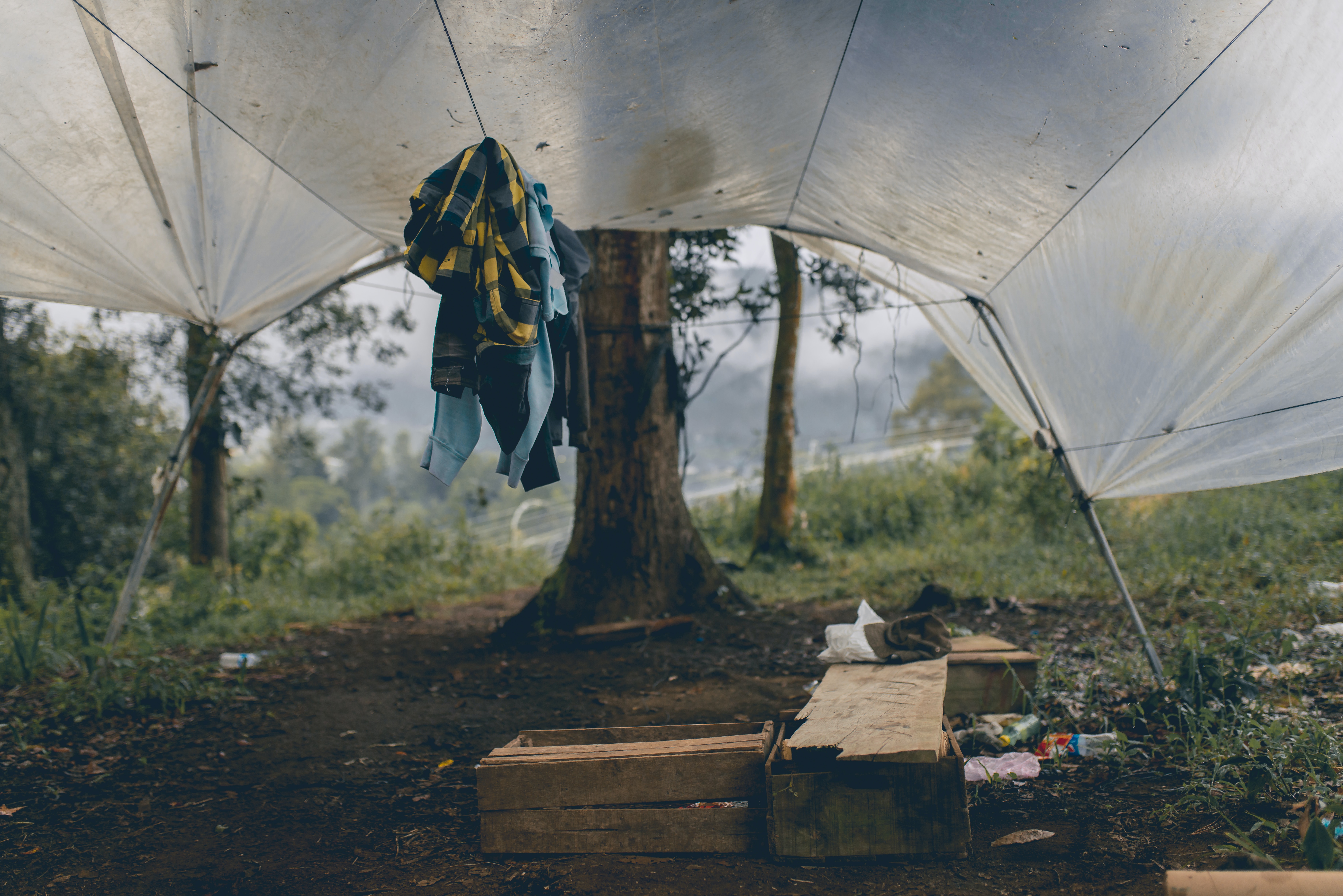

By David M. Greenwald
Executive Editor
Davis, CA – When the third stabbing occurred late on Monday night, the police responded by issuing a shelter in place for residents in the downtown area as the police conducted a thorough manhunt for the suspect. To their credit, the city and residents alike recognized that, while such an order works fine for those who have shelters, the unhoused population is left vulnerable.
Given that two of the three attacks were made on homeless individuals, it was yet another reminder that allowing people to remain unsheltered leaves them vulnerable.
The emergency has passed. Now it is time to figure out the best way to protect our vulnerable residents—not just because of the threat of attack, but because leaving people in the elements creates all sorts of problems, not only for them but for the community at large.
Social Services Director Dana Bailey on Tuesday noted, “Davis Community Meals and Housing at this time is able to provide additional sheltering capacity… they’ve opened their Paul’s Place location, and right now they’re expanding some of their sheltering  availability there.”
availability there.”
She added, “Davis Community Meals and Housing is being supported by a number of community-based and faith-based organizations right now, including Heart of Davis, who’s working with them on providing meals overnight to people that may stay overnight.”
Several years in the works, Paul’s Place represents not only a transitional and permanent supportive housing program, but it provides a variety of resources and programs for residents. Similar permanent supportive housing programs are popping up across the state.
During his recent State of the City address a few months ago, Mayor Will Arnold noted the projects could become the blueprint for future projects aiming to address unsheltered and at-risk populations.
“A key piece of our housing portfolio is finding ways to provide housing for those most in need of a roof over their heads,” Arnold said. “I was so proud to be able to speak and participate in the opening of Paul’s Place. It’s a new vertical tiny home village that includes emergency services and supportive housing, supported directly by the city of Davis. It’s going to be something that has never quite been done this way anywhere and this could be a model for how we unite housing, shelter and services for folks most in need.”
The facility, nearly six years in planning and construction, opened to residents just over a month ago on April 1.
It has 18 individual private units of permanent supportive micro-housing on the third and fourth floors and 10 single-resident units of transitional housing on the second floor.
But do the math and realize that we probably need five to six more such facilities just to deal with current homeless populations.
We have recognized for some time that having large unsheltered homeless populations is not just a nuisance for communities upset over large and growing tent cities and litter and waste, but it’s also a public health threat—which is why we saw Project Roomkey, which utilized vacant hotel and motel rooms during the pandemic.
Davis is not alone. A recent story in CalMatters noted that there are just 21,000 beds in Los Angeles County for more than 69,000 homeless residents and in Sacramento it’s 3000 beds for 9300 unhoused residents.
“Those massive gaps – which ensure thousands of people remain homeless – are visible in cities throughout California,” CalMatters wrote. “But despite constant reassurances from Gov. Gavin Newsom and lawmakers that getting people off the street is a top priority, there’s no state requirement for cities and counties to make sure they have enough shelters or housing for homeless residents.”
There is legislation now making its way through the legislature that could help address this clear shortfall.
SB 7 would require cities and counties to provide homeless-serving housing as part of their regional housing plans.
Moreover, in addition to mandating cities and counties to plan for housing their homeless populations, the bill would also provide funding to local governments to provide housing for the homeless.
The bill is authored by Senator Catherine Blakespear, a Democrat from Encinitas.
“The goal of this bill is to eliminate encampments in public spaces and provide shelter for people to live inside,” Blakespear said in a release a few weeks ago. “Homelessness is a statewide problem, and every community must do its fair share to address it.”
Blakespear told CalMatters this past week that it’s a “‘transformational idea’ that could help move the needle on homelessness where other attempts have failed.”
“Everything we’re doing currently, it will result in homelessness growing,” Blakespear said in an interview. “It will not result in homelessness going down.”
Mandates are of course one thing. Money is another. CalMatters pointed out, “some bill critics wondered where the money would come from to build all this extra housing.”
“The funding’s going to be incredibly critical,” said Jason Rhine, assistant director of legislative affairs for the League of California Cities. “If we do not have the money, we will not be able to house individuals.”
The article notes, “Blakespear wants to pair her bill with a new state fund, which would help cities, counties and nonprofits build housing for people who are homeless or at risk of losing their homes. But it remains to be seen how much — if any — money the Legislature allocates, as the state faces a budget deficit of at least $22.5 billion this year.”
Blakespear envisions it would “include both permanent and temporary — meaning apartments, but also shelters, RV sites, single-room-occupancy hotels, and more.”
Then again this is only one piece of the puzzle. Just as important is building housing that can help those living on the margins to avoid slipping into homelessness.
From my perspective there are several factors here. One is that we have a housing crisis that has pushed the cost of housing way up. That means that as costs go up, the margin for error diminishes.
Second, we have a growing population who are suffering from mental illness and substance use disorder. If the cost of housing is lower, and the supply greater, those populations can remain housed. But the housing crisis has pushed many who are vulnerable over the edge.
Then all you need is something to go wrong and once they slip into homelessness, pre-existing problems like mental illness and substance order will snowball.
The bottom line is we need a range of housing to address our homeless crisis, but permanent supportive housing is clearly an area of dire need and bills like SB 7 could prove a gamechanger—if of course we get the funding in place to support them.







No argument that the unsheltered are more vulnerable to all aspects of personal safety. I think it could be stated with equal or even greater force of conviction that what happened this past week is a reminder that we need to solve or better address mental illness. Mental and emotional health are at the root of the more dire homelessness cases as well as violence. It’s a double whammy for the most vulnerable with no shelter.